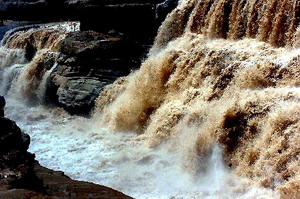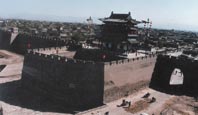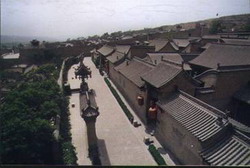Hukou Waterfall

The Hukou Waterfall, the largest waterfall on the Yellow River, the second largest waterfall in China (after the Huangguoshu Waterfall), is located at the intersection of Shanxi Province and Shaanxi Province, 165 kilometers to the west of Fenxi City, and 50 kilometers to the east of Yichuan. The Hukou Waterfall is naturally formed when water of middle reaches of the Yellow River flows through Jinxia Grand Canyon. The width of the waterfall changes with the season, usually 30 meters wide but increasing to 50 meters during flood season. It has a fall of over 20 meters. When the Yellow River surges towards the Hukou Mountain, blocked by mountains on both sides, its width is abruptly narrowed down to 20-30 meters. The water speeds up with increasing water power. Then it rushes down from the narrow mouth, forming a grand waterfall of 15 meters high and 20 meters wide, as if water is pouring down from a huge teapot. Hence it gets the name Hukou (Flask Mouth) Waterfall.
Just below the waterfall, there is a shining stone called guishi. What makes the stone mysterious is that it moves up and down according to the water level. No matter how large the water volume is, it shows up a little.
In the middle of the river, about 3,000 meters off the Hukou Waterfall, an enormous rock catches the attention of visitors. When the Yellow River flows to this point, it will be divided into two flows, rolling and roaring on and on from both sides of the rock and then rejoining together.
Beneath the waterfall is Qilangwo Bridge connecting two provinces, Shanxi and Shaanxi. In the sunshine, the mist is refracted by sunlight to create a rainbow spanning over the water like a colorful bridge. In 1991, Hukou Waterfall was named one of the "40 Best" national scenic spots.
Due to its awkward location in the Loess Plateau hinterlands, Hukou was once very difficult to access. After the local government improved transport and tourist facilities, the number of tourists rose from 20,000 in 1994 to 47,000 in 1995. The figure for 1996 reached 100,000 tourists.




